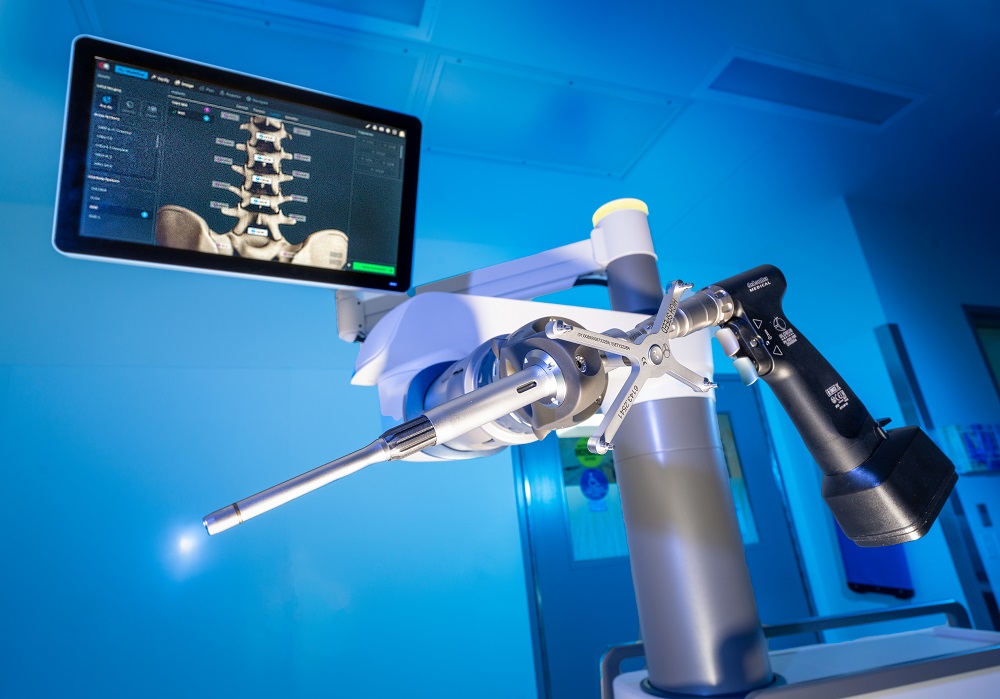If you've been dealing with shoulder pain that just won’t quit or keeps getting worse, you’re not...
Read More

This month, Inspira Medical Center Mullica Hill is introducing a new tool to its spine surgery arsenal. The ExcelsiusGPS® is a robotic navigation platform that helps surgeons operate on the spine without using constant intraoperative X-rays. “This system is a collaborative tool,” said Robert Ames, M.D., an orthopedic surgeon at Mullica Hill. “It allows us to perform highly technical surgeries through minimally invasive corridors.”
The platform is highly effective at placing pedicle screws during spinal fusions for both neurosurgery and orthopedic surgery cases. “This is an integral part of reconstructive surgery—pedicle screws are used to stabilize the spine,” said Dr. Ames.
Patients with spinal stenosis or disc herniation can benefit from the use of this technology. Inspira’s orthopedic surgeons and neurosurgeons will be able to perform faster and more accurate anterior lumbar interbody fusions, posterior lumbar spinal fusions, transforaminal lumbar interbody fusions, lateral interbody fusions and more with the help of this robot.
The ExcelsiusGPS isn’t an autonomous system—it uses pre-operative CT scans and one or two X-rays to navigate the patient’s body during surgery. “In the past, we would use several intraoperative X-rays to navigate,” said RJ Meagher, M.D., a neurosurgeon at Mullica Hill. “But with this new system, we’re able to implant a reference frame in the ilium before surgery so the robotic arm can use the pre-operative imaging to know where it needs to be without the use of multiple intraoperative X-rays.”
Surgeons determine the segments of the spine that need to be addressed during pre-operative planning, as well as the length and width of pedicle screws. Then, during surgery, the robot moves to the appropriate segment of the spine to place the screws when a button is pressed.
One of this robotic system's biggest benefits is the reduced radiation exposure for surgeons and staff. “I’ve been exposed to thousands of hours of radiation over the course of my career because of fluoroscopy,” said Dr. Meagher. “But this eliminates the need for so many X-rays during surgery, which means it’s safer for everyone present in the operating room.”
“There’s an expectation among patients now that incisions are getting smaller and smaller. But when you’re performing minimally invasive surgery, it’s important to have an accurate view of the patient’s body—you’re not looking at everything wide open,” said Dr. Ames.
The ExcelsiusGPS also allows surgeons to be more efficient and accurate. In certain cases, it can eliminate the need to reposition the patient during surgery to place pedicle screws, which saves a lot of time in the OR. It can also help position screws for hard-to-image joints, like the sacroiliac joint.
For the patient, this platform allows for faster recovery and a safer, less invasive approach than open surgery. “Having this robot is like having a third more rigid and more accurate arm,” said Dr. Ames.

If you've been dealing with shoulder pain that just won’t quit or keeps getting worse, you’re not...
Read More
Neck pain is a common issue that can disrupt your daily life, but knowing when to manage it at home...
Read More
Shoulder pain can result from injuries, arthritis or other conditions, and determining the right...
Read More